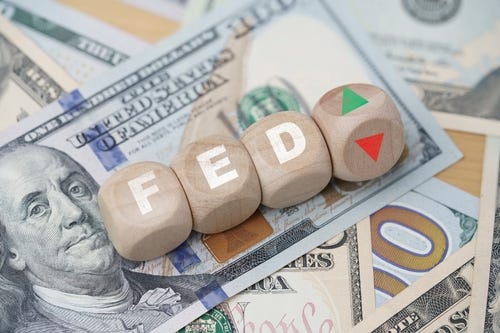What to Expect Next From the Fed
Almost all 18 members on the Fed’s rate-setting committee expect the central bank’s key rate to rise to a peak of 5 to 5.25 percent and stay there through this year
NOTE TO READERS: The following article was found in this week’s issue of The Trends Journal. Consider subscribing here for in-depth, independent geopolitical and socioeconomic trends and trend forecasts that you won’t find anywhere else.
The U.S. Federal Reserve added a quarter point to its key interest rate earlier this month, lifting the yield it pays on deposits to 4.75 percent and the rate it charges borrowing banks to 5 percent.
“We no longer state that ongoing rate increases will be needed to quell inflation,” Fed chair Jerome Powell said in his 22 March press briefing. “We now anticipate that some additional policy firming may be appropriate.”
Asked to clarify, Powell said “firming” applies to the Fed’s key federal funds interest rate. He directed markets to focus on the words “some” and “may” that have replaced “ongoing.”
Almost all 18 members on the Fed’s rate-setting committee expect the central bank’s key rate to rise to a peak of 5 to 5.25 percent and stay there through this year.
That suggests one more quarter-point rise this year before the Fed pauses its increases.
In 2024, the committee may consider rate cuts that would drop the rate to around 4.3 percent, according to meeting records reported by The Wall Street Journal.
Powell again dismissed conjectures that the central bank will cut interest rates this year, saying the central bank has no such expectations.
Interest-rate futures markets have other ideas. They priced in another quarter-point bump by the Fed in May, but are still betting the Fed will begin to cut rates in the relatively near future, indicating a belief that the chance of a recession is still strong.
“Market expectations around tightening have moved significantly lower,” chief investment officer Nancy Curtin at Alvarium Tiedemann told the Financial Times. “I’m not sure the Fed is quite there but there’s been a definite change in tone.”
The Fed’s softer language follows this month’s turmoil in the U.S. banking industry after the failure of Signature and Silicon Valley banks and several others edged toward collapse.
“Events over the past two weeks are likely to result in tighter credit conditions for households and businesses, which would, in turn, affect economic outcomes,” Powell noted.
That would reduce the Fed’s need to raise rates, he indicated.
However, “it is too soon to determine the extent of these effects and, therefore, too soon to tell how monetary policy should respond,” he added.
“There was a lot of debate” during the Fed meeting “but we decided there’s clear signs that the banking system is sound and resilient,” Raphael Bostic, president of the Federal Reserve Bank of Atlanta, said in a 23 March NPR interview.
Powell said the path to a “soft landing,” in which inflation steadily decreases without creating a recession, “still exists and we’re certainly trying to find it,” despite the banking sector’s troubles.
The Fed expects the U.S. economy to grow just 0.4 percent this year but recover to a 1.2-percent GDP expansion in 2024.
TREND FORECAST: How the U.S. and EU banking crisis unravels over the next several weeks will determine to a great extent where the equity markets and economy are heading. Should the economic fear quell between now and early May when the Feds meet again and they put a pause on raising interest rates, it will boost equities and the housing market… along with gold prices, since the dollar will weaken as interest rates drop.




⚘ SOLE SIGNATORY OF "KORAN" (King of Recognized Asset Nations) CANDID INTERVIEW in New York (2009) as the Sole Heir / Sole Signatory of the Global Assets of the Royal Family Clan !!!
https://twitter.com/AlphaOmegaGen/status/1643167433619030016?t=buildO8nCvbKRngE2l9dbw&s=19
🔸️
#FYI.
Seems like this isn't much of a forecast. Aren't you saying if conditions worsen the stock market could go down but if things get better the market will go up?